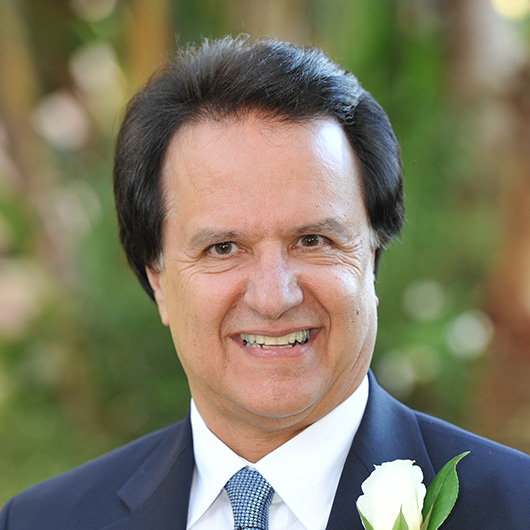23-28 July 2023 • Portland, Oregon, USA
23-28 July 2023 • Portland, Oregon, USA
IEEE AP-S/URSI 2023
23-28 July 2023 • Portland, Oregon, USA

Yahya Rahmat-Samii
Distinguished Professor
Department of Electrical and Computer Engineering
University of California, Los Angeles, USA
The ever increasing advances in computational power have fueled the temptation to search for optimum solutions for complex engineering system designs. The well-known brute force design optimization techniques are systematically being replaced by the state-of-the-art Evolutionary Optimization (EO) methodologies. In recent years, EO techniques are finding growing applications to the design of all kinds of systems with increasing complexity. Among various EO’s, nature inspired techniques such as Genetic Algorithms (GA), Particle Swarm Optimization (PSO) and more recently Brain Storm Optimization (BSO) have attracted considerable attention. GA utilizes an optimization methodology which allows a global search of the cost surface via the mechanism of the statistical random processes dictated by the Darwinian evolutionary concept (adaptation, selection, survivability and mutation). PSO is a robust stochastic evolutionary computation technique based on the movement and intelligence of swarms of bees looking for the most fertile feeding location applying their cognitive and social knowledge. BSO is a group intelligence optimization algorithm inspired by the collective behavior of human beings in solving problems. This presentation will focus on: (a) an engineering introduction to GA, PSO and BSO by describing in a novel fashion the underlying concepts and recent advances for those who have used these techniques and for those who have not had any experiences in these areas, (b) demonstration of potential applications of these evolutionary optimization techniques to a variety of electromagnetic engineering designs dealing with space and planetary missions, medical and wireless devices, multi-function and adaptive antennas, metamaterials and nano structures, etc., and (c) assessment of the advantages and the limitations of these techniques.
Yahya Rahmat-Samii (Life Fellow, IEEE) is a Distinguished Professor, and the Former Chairman of the Electrical and Computer Engineering Department, University of California at Los Angeles (UCLA), Los Angeles, CA, USA. He was a Senior Research Scientist with the Caltech/NASA’s Jet Propulsion Laboratory, Pasadena, CA, USA. He received his B.S. for the University of Tehran, Iran, with highest honor and his M.S. and Ph.D. for the University of Illinois, Urbana-Champaign, USA. He has authored or coauthored more than 1100 technical journal and conference papers and has written over 35 book chapters and seven books. He has more than 20 cover-page IEEE publication articles. His research contributions cover diverse areas of modern electromagnetics and antennas spanning from small medical antennas to large space deployable antennas. His research interests include electromagnetics, antennas, measurements and diagnostics techniques, numerical and asymptotic methods, satellite and personal communications, human/antenna interactions and medical application, metamaterials and periodic structures, and nature-inspired optimization algorithms. Dr. Rahmat-Samii is a fellow of AMTA (Antenna Measurement Techniques Association), ACES (Applied Computational Electromagnetics Society), EMA (Electromagnetics Academy), and URSI (International Union of Radio Science). He was a recipient of the Henry Booker Award from URSI, in 1984, which is given triennially to the most outstanding young radio scientist in North America, the Best Application Paper Prize Award (Wheeler Award) of the IEEE TRANSACTIONSON ANTENNAS AND PROPAGATION in 1992 and 1995, the University of Illinois ECE Distinguished Alumni Award in 1999, the IEEE Third Millennium Medal and the AMTA Distinguished Achievement Award in 2000. In 2001, he received an Honorary Doctorate Causa from the University of Santiago de Compostela, Spain. He received the 2002 Technical Excellence Award from JPL, the 2005 URSI Booker Gold Medal presented at the URSI General Assembly, the 2007 IEEE Chen-To Tai Distinguished Educator Award, the 2009 Distinguished Achievement Award of the IEEE Antennas and Propagation Society, the 2010 UCLA School of Engineering Lockheed Martin Excellence in Teaching Award, and the 2011 campus-wide UCLA Distinguished Teaching Award. He was the winner of the 2011 IEEE Electromagnetics Field Award. He was also a recipient of the Distinguished Engineering Educator Award from The Engineers Council in 2015, the John Kraus Antenna Field Award of the IEEE Antennas and Propagation Society and the NASA Group Achievement Award in 2016, the ACES Computational Electromagnetics Award and the IEEE Antennas and Propagation S. A. Schelkunoff Best Transactions Prize Paper Award in 2017, and the prestigious Ellis Island Medal of Honor in 2019. The medals are awarded annually to a group of distinguished U.S. citizens who exemplify a life dedicated to community service. These are individuals who preserve and celebrate the history, traditions, and values of their ancestry while exemplifying the values of the American way of life and are dedicated to creating a better world. He is also the winner of the 2011 IEEE Electromagnetics Field Award. He received the Harrington–Mittra Computational Electromagnetics Award in 2022 and he is the recipient of the 2023 USNC-URSI Outstanding Educator Award. He is the Designer of the IEEE Antennas and Propagation Society logo which is displayed on all IEEE AP-S publications. He is a holder of the Northrop-Grumman Chair in electromagnetics at UCLA, a member of the U.S. National Academy of Engineering (NAE), a Foreign Member of the Chinese Academy of Engineering (CAE) and the Royal Flemish Academy of Belgium for Science and the Arts. He was the 1995 President of the IEEE Antennas and Propagation Society and the 2009–2011 President of the United States National Committee (USNC) of the International Union of Radio Science (URSI). He has also served as an IEEE Distinguished Lecturer presenting lectures internationally.
If you do not have a ticket, you may still be admitted to the event if there is available seating.